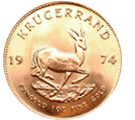 Gold,
the great drama Gold,
the great drama
Richard Russell
snippet
Dow Theory Letters
Mar 5, 2008
Extracted
from the Feb 29, 2008 edition of Richard's Remarks
The Great Drama Unfolds --
Gold coins can be a bit difficult to handle. They are heavy,
they are visible, and must be stored in a safe place. But for
most people, gold coins (actual gold in one's possession) has
one great advantage -- you're not tempted to sell your coins
on every decline or correction in gold. For this reason, many
people have done better holding a smaller number of Krugerrands
or American Eagles than have larger traders who have moved in
an out of gold in an attempt to "beat the market."
Some History -- In January
1980 gold topped out at a price of 850 US dollars per ounce.
Down goes gold -- down and down, year after year until gold reaches
a low of 256 in August of 1998.
There, despised and ignored,
gold sinks to its historic bear market low. From its ignominious
low of 256, a new primary bull market is born. But 28 years of
decline has soured the US public on gold. If they are interested
at all, they abide by the wise men of the government and the
Federal Reserve. "Gold is history," they are told.
"Gold is a story whose time has past." "Gold is
a relic from another era, a useless metal used in fancy dentistry
and in jewelry.
Under a cloud of disinterest
and false tales, gold starts up again. Slowly, almost surreptitiously,
gold rises to 300, then to 400, to 500 and 600. Nobody is interested.
Some of the old gold mining stocks move higher. They pay no dividends.
Nobody is interested in them. Names from the past appear and
are taken over. Dome Mines, Homestake and Campbell Red Lake.
Skeletons dancing into view and then disappearing.
Gold works its way still higher.
A few people remember that gold is money, and they suggest that
gold be purchased. But frequent sharp declines and occasional
deep corrections frighten the early buyers of gold. They take
their profits. Nevertheless, the metal reaches the 700s. A small
group of admirers known facetiously as "gold-bugs"
urge their followers to buy gold. "It's cheap," insist
the gold-bugs, "gold is as cheap as dirt -- buy it."
Then, in January 2008, gold
does the impossible. It breaks out above its old 850 peak-level
of 1980. After 28 years of being held back, gold bursts is chains
and breaks free. Gold pushes above 850 into space never seen
before by the yellow metal. It's like a prisoner who, having
been held in a dungeon for 28 years, suddenly escapes from the
darkness of his cell and emerges into the glare of sunlight.
Twenty-eight years of compression
has been released. The advance above the 850 level is still quiet,
almost eerie -- but relentless. "It's speculative nonsense,"
growl the analysts, "it's manipulation by a crazy element
that is living in the past." But gold continues to work
higher. By February gold is nearing the thousand-dollar-an-ounce
mark.
In the meantime, silver, the
other monetary metal is pushing towards twenty dollars an ounce.
Silver, that sold as low as 23 cents an ounce in 1932, is now
selling close to twenty dollars an ounce. "Lowly silver
at twenty bucks a pop, I don't believe it."
In the meantime, the US is
dealing with an incredibly difficult situation. The nation is
straining under the onus of a potential housing collapse. The
new Federal Reserve Chairman, Ben. S. Bernanke, is fearful that
the housing disaster will send the nation into recession and
worse -- deflation. Bernanke is well aware that the two thirds
of US families own their own homes, and that consumer buying
is responsible for 70 percent of the Gross Domestic Product of
the US. On top of everything else, the great banks of the US
are in trouble. Bernanke must save the banks and he must hold
back the forces of deflation.
But good Lord, what about inflation?
The Fed has made its decision. Their first task is to keep the
US out of the grip of recession. This allows gold and silver
to further express themselves. The lid is off 28 years of compression
and imprisonment. The great bull market in precious metals pushes
higher. In the background, twenty central banks from around the
world print their fiat paper in an orchestrated effort to insure
prosperity.
Meanwhile, the great gold bull
has broken free of its chains. A strange and unprecedented union
of forces has emerged. The US public is unaware of the great
phenomenon that is playing out before their eyes. Somewhere ahead,
the US public will enter the bull market. Will it be in 2008,
in 2009, in 2010? The timing, as we might suspect, is known only
to the mysterious gods of the market.
lots more follows for subscribers...
written Feb 29, 2008
Richard Russell
website: Dow
Theory Letters
email: Dow Theory Letters
Russell Archives
© Copyright 1958-2014 Dow Theory Letters, Inc.
Richard Russell
began publishing Dow Theory Letters in 1958, and he has
been writing the Letters ever since (never once having skipped
a Letter). Dow Theory Letters is the oldest service continuously
written by one person in the business.
He
offers a TRIAL (two consecutive up-to-date issues) for $1.00 (same price that was
originally charged in 1958). Trials, please one time only. Mail
your $1.00 check to: Dow Theory Letters, PO Box 1759, La Jolla,
CA 92038 (annual cost of a subscription is $300, tax deductible
if ordered through your business).
321gold Ltd

|